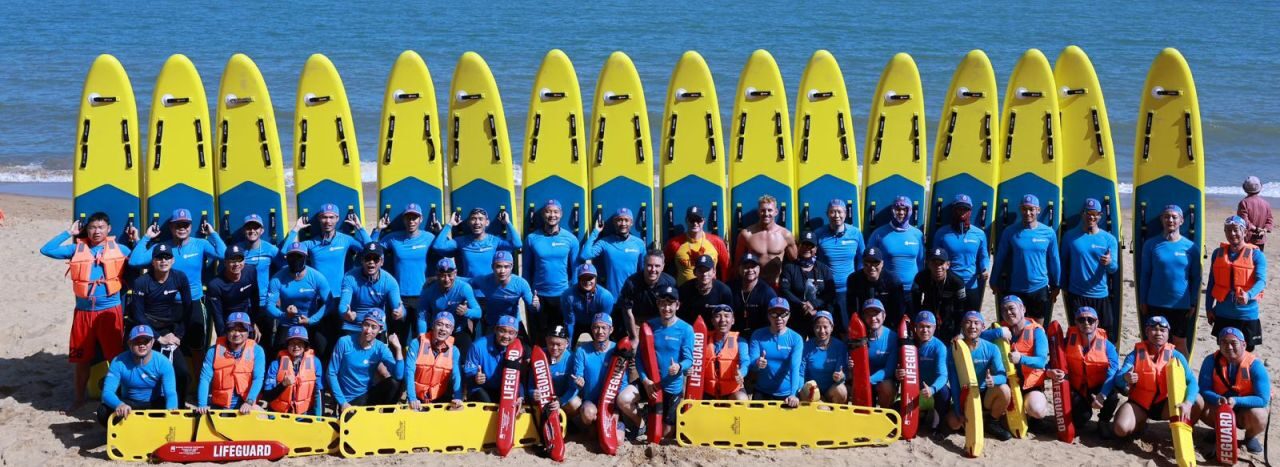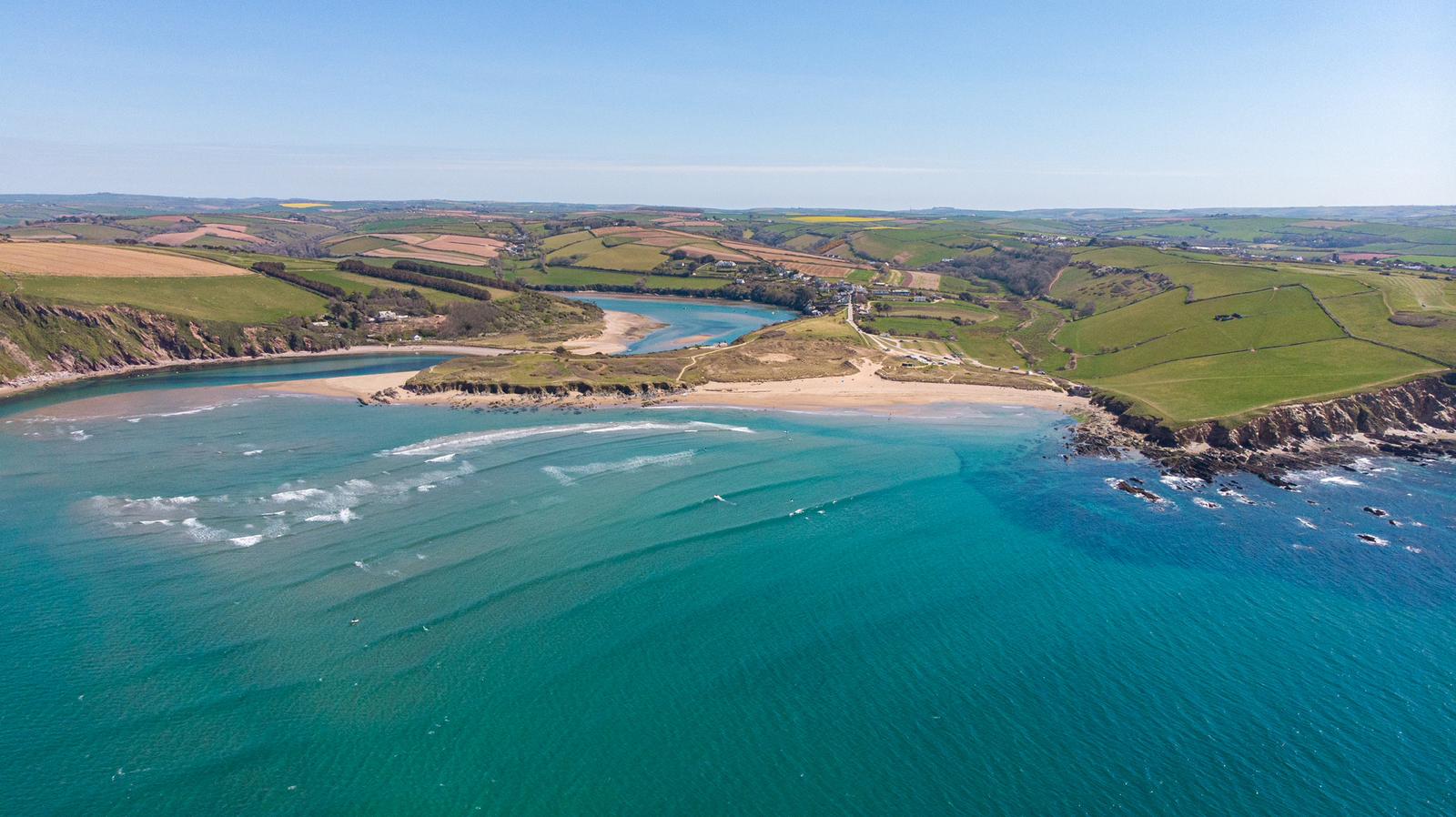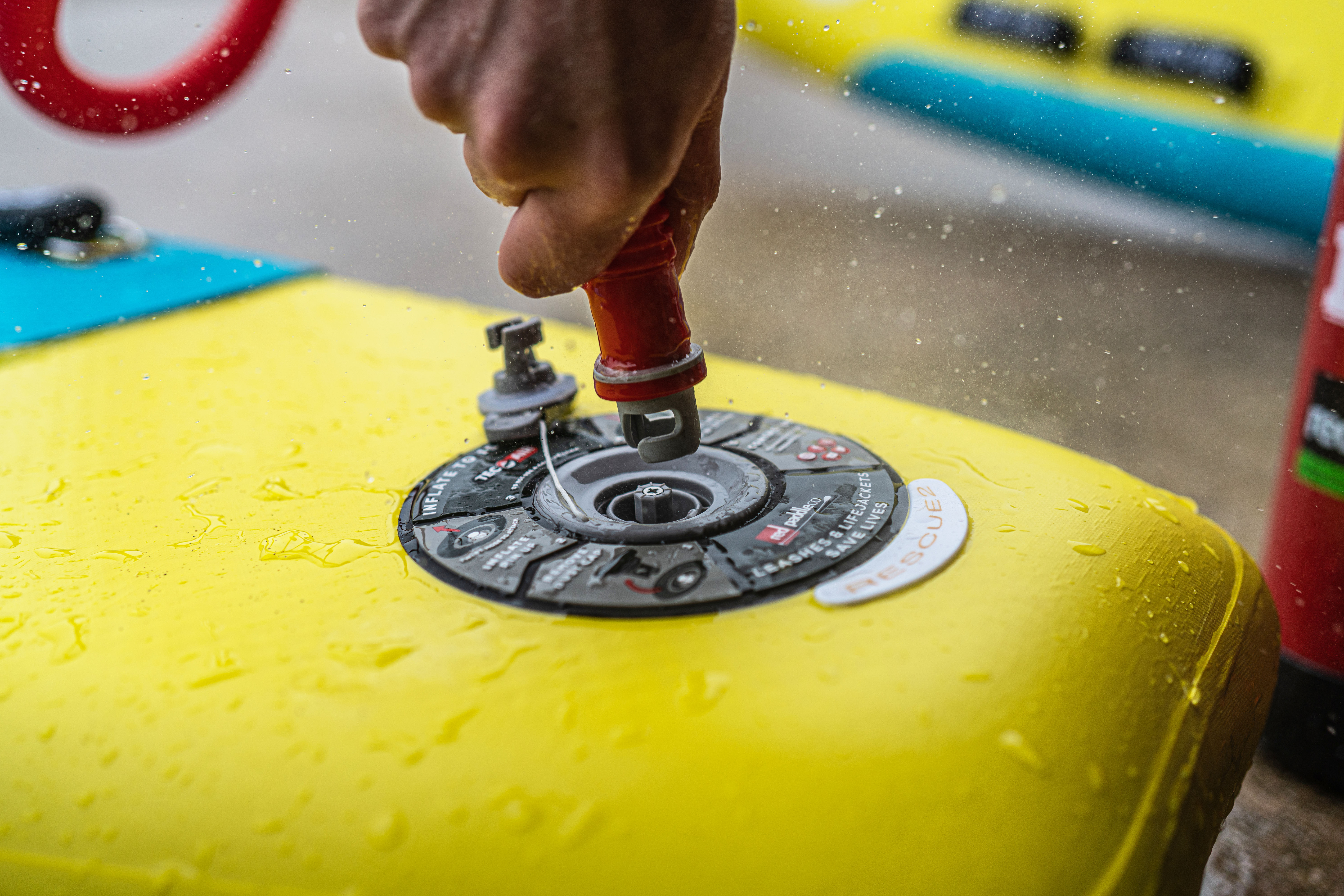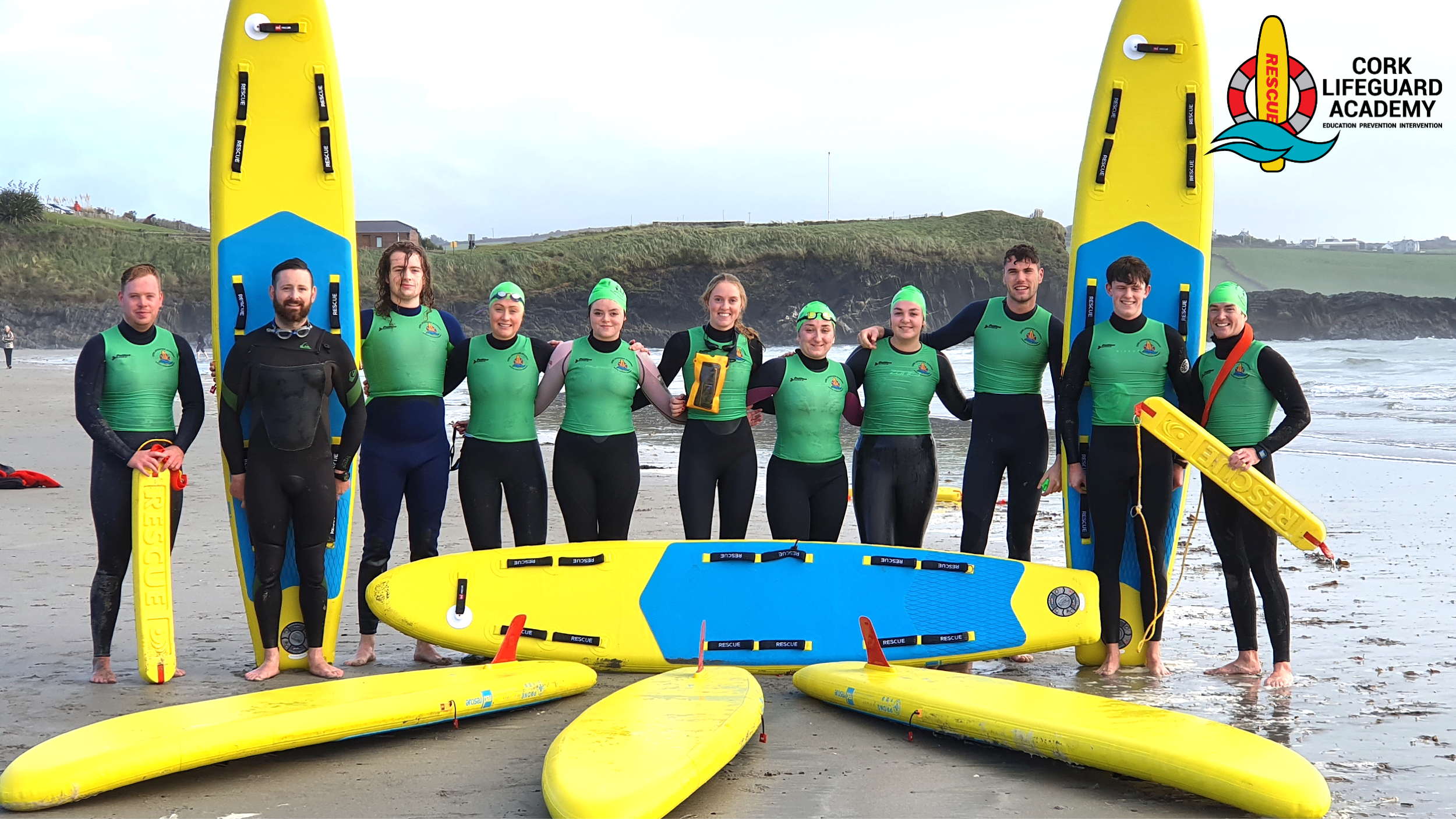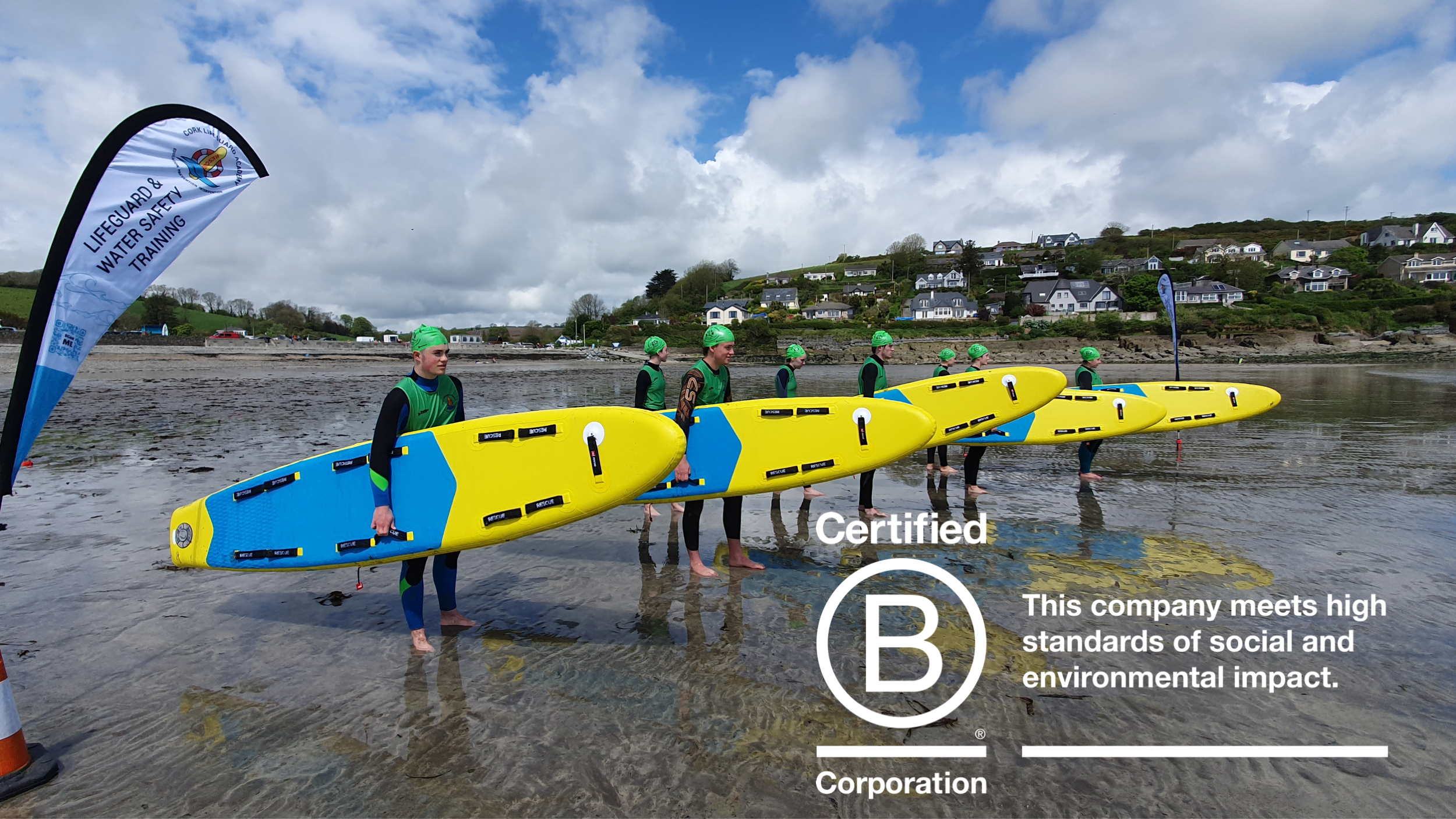This World Drowning Prevention Day on the 25th July we are asking you, the professional lifesavers of the world to help us spread an incredibly important SUP safety message.
With SUP popularity booming and rescues around our coasts and waterways becoming more frequent, the industry has come together to tackle this issue head on. James from Red Rescue and Red Paddle Co’s Founder, John Hibbard, recently attended the first SUP Safety conference hosted by the RNLI at their headquarters in Poole. Stakeholders from across the industry were present with representatives from the RNLI, RLSS UK, SLSGB, British Canoeing and many other SUP brands and individuals.
The aim was to come together with a unified voice and a targeted safety message to help save lives this summer. The challenge faced is not small: with many SUP paddlers being new to the world of watersports there is no ‘one size fits all’ approach as the dangers being faced are often unseen, changeable and localised. However, here are some guiding principles which if followed allow paddlers to safely, PLOT their paddle….
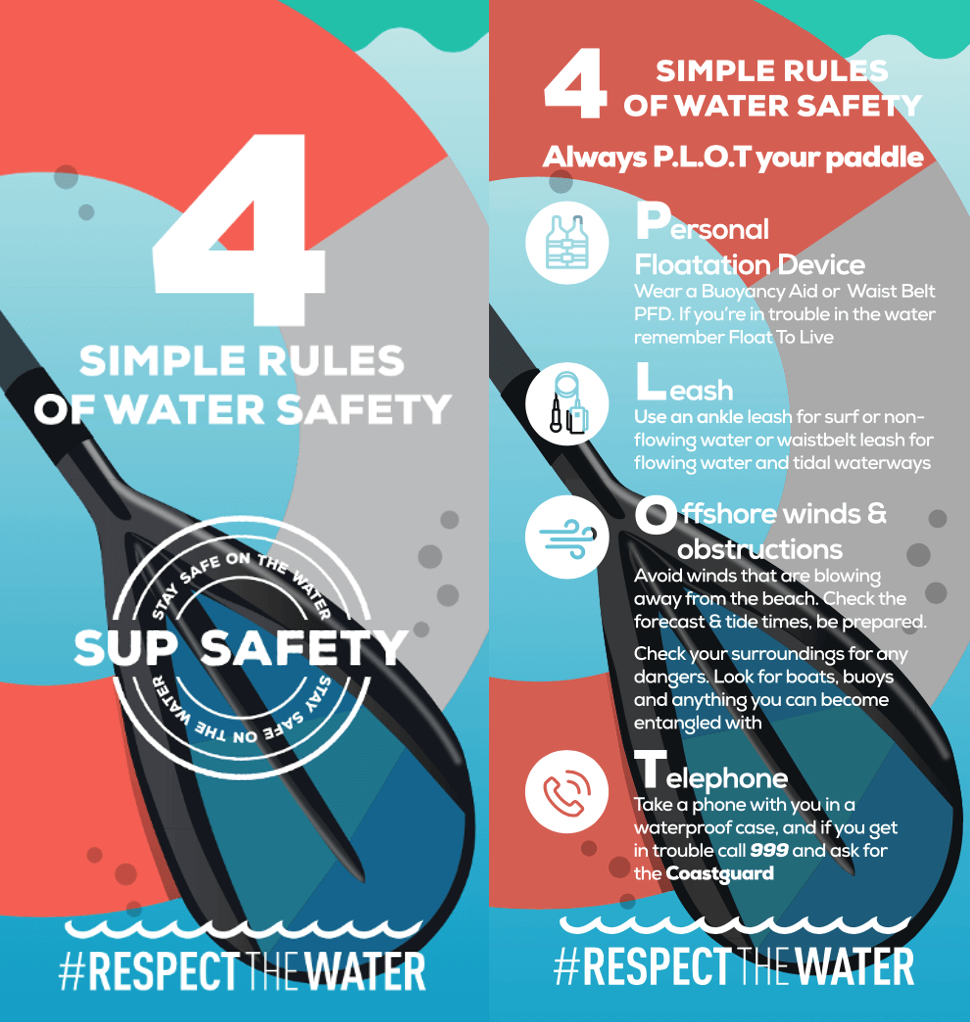
PLOT
1 – Personal Flotation Device
2 – Leash
3 – Offshore Winds & Obstructions
4 – Telephone
As a network of professional lifesavers, we are asking you to help us spread the message as far and wide as possible. The more posts, shares and views it gets, the more memorable it will become and the less risks people will take. You can download the flyer resources here and below is a great video that helps explain the message clearly.
At the SUP Safety Conference, the RNLI shared that 40-60% of their SUP rescues are caused by paddlers not being able to get back to shore in Offshore Winds. This highlights the need for educating paddlers on reading weather reports and conditions, understanding beach safety signage and knowing when to paddle and when not to.
The second most common rescue was due to immersion in water, reinforcing the need for paddlers to wear an appropriate Personal Flotation Device and the correct leash. There are three types of leash and each have a use in different conditions. For paddlers on non-moving water, a coiled ankle/cuff leash is correct. Here a quick release waistbelt leash is not appropriate as there can be entanglement issues or the accidental release of the board, leaving the paddler stranded in the water if there is any wind.
On moving water (tidal or river) a paddler should be using a quick release waistbelt leash. These are important to allow you to jettison your board in moving water if entangled, but they must be used in conjunction with a buoyancy aid as the paddler will have lost their board if they release the buckle. Anyone using a quick release waist leash must understand how and when to use it and should practice doing so. In surf, a straight ankle/calf leash should be used and a coiled or quick release waistbelt leash should be avoided.
A key message is to always paddle within your limits and novice/new paddlers should avoid flowing water. Lessons are always advised for paddlers tackling new conditions and it is not recommended to paddle alone. Telling someone when/where you are going and when you are expected back is a well-established and sensible standard practice across all water sports.
SUP safety is a complex but important topic, if you have any questions at all, then please get in touch and we would be happy to help offer clarity on the outcomes of the RNLI’s SUP Safety conference and how we can all help keep our paddlers safe.
Most importantly – please share the P.L.O.T. message – use it to have conversations with paddlers in your circle, to educate them and prevent any further unnecessary loss of life on our waters.


